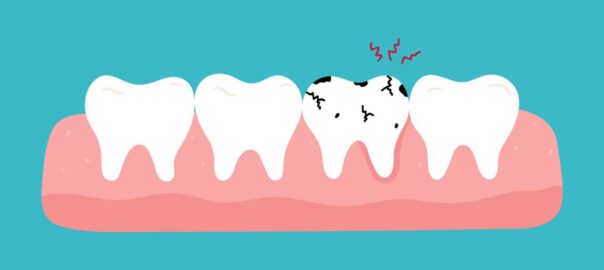Cavities are one of the most common oral health issues. In fact, around ninety percent of adults between the ages of 20 and 54 have had tooth decay in their teeth. Cavities can impact any part of your teeth, including the visible surface or between your teeth. Cavities between your teeth can be a little harder to detect. However, there are several signs that indicate the presence of cavities. Below, you will find out how to know if you have a cavity between two teeth.
How to Know If You Have a Cavity Between Two Teeth
Cavities are often associated with several symptoms. If you experience any of these symptoms, contact your dentist right away. Early detection and treatment are key if you have cavities. It can reduce the risk of further damage to your oral health. Consider the following symptoms that indicate you may have a cavity between your teeth.
Pain or Discomfort
Pain or discomfort when you are biting down on or chewing food is an indication of trouble. It could mean that you have a cavity between your teeth. The pressure from biting and chewing can aggravate the area around the cavity. The pain can vary in severity. It can also feel dull or sharp. Tooth pain can indicate cavities or worse, so it is important to contact a dentist right away.
Temperature Sensitivity
Temperature sensitivity is a common symptom of cavities. It is an early symptom, so heading to the dentist right away is helpful. You may notice sensitivity when you consume hot or cold foods or beverages. However, you may also notice sensitivity when you eat sugary foods. The pain is often sudden and sharp. Sensitivity can also be a sign of more serious oral health conditions. Because of this, it’s advisable to schedule a dental appointment right away.
Bleeding Gums
Bleeding or irritated gums are a sign of cavities between your teeth. However, issues with your gums also indicate more advanced oral health issues. One of the more common oral health issues is gum disease. This can lead to serious oral health issues, including tooth loss in severe cases. If you notice bleeding, inflammation, or sensitivity around your gums, it is necessary to get it treated right away. Avoid irritating the area, as it can cause discomfort.
Visible Spots or Stains
Cavities in between your teeth are harder to see. However, you may notice stains or dark spots in between your teeth. These are often black or brown in color. You may also notice greyish shadows. If you notice anything in between your teeth that cannot be removed with flossing, it is time to go to the dentist. Cavities between your teeth can cause serious damage to your oral health.
Cavity Diagnosis and Treatment
If you experience any of the symptoms associated with cavities, schedule an appointment with the dentist. They can effectively diagnose the issue to determine if you have cavities or any other oral health issues. Cavities are diagnosed using a combination of diagnostic tools. These include X-rays, a visual exam, or a floss test. If you just have a cavity, it can be easily addressed in the same appointment in many cases.
The most common treatment for cavities includes fillings. More extensive cavities or more serious oral health issues may require different treatment. This includes crowns or a root canal. This is why early intervention is essential. You can easily avoid more aggressive treatment options if you address cavities early on. If you are concerned you may have a cavity, contact the team at Samaritan Dental Arts to schedule an appointment today!









 Yelp
Yelp I have never had a better dental experience prior to my visit with Dr. Zabolian. It was pain free for the first time ever, the staff was friendly, accommodating to my schedule, there were no problems with my insurance claims... I am so happy I have found a dentist (after all these years) I feel so comfortable going to and also taking my family.
I have never had a better dental experience prior to my visit with Dr. Zabolian. It was pain free for the first time ever, the staff was friendly, accommodating to my schedule, there were no problems with my insurance claims... I am so happy I have found a dentist (after all these years) I feel so comfortable going to and also taking my family. 






